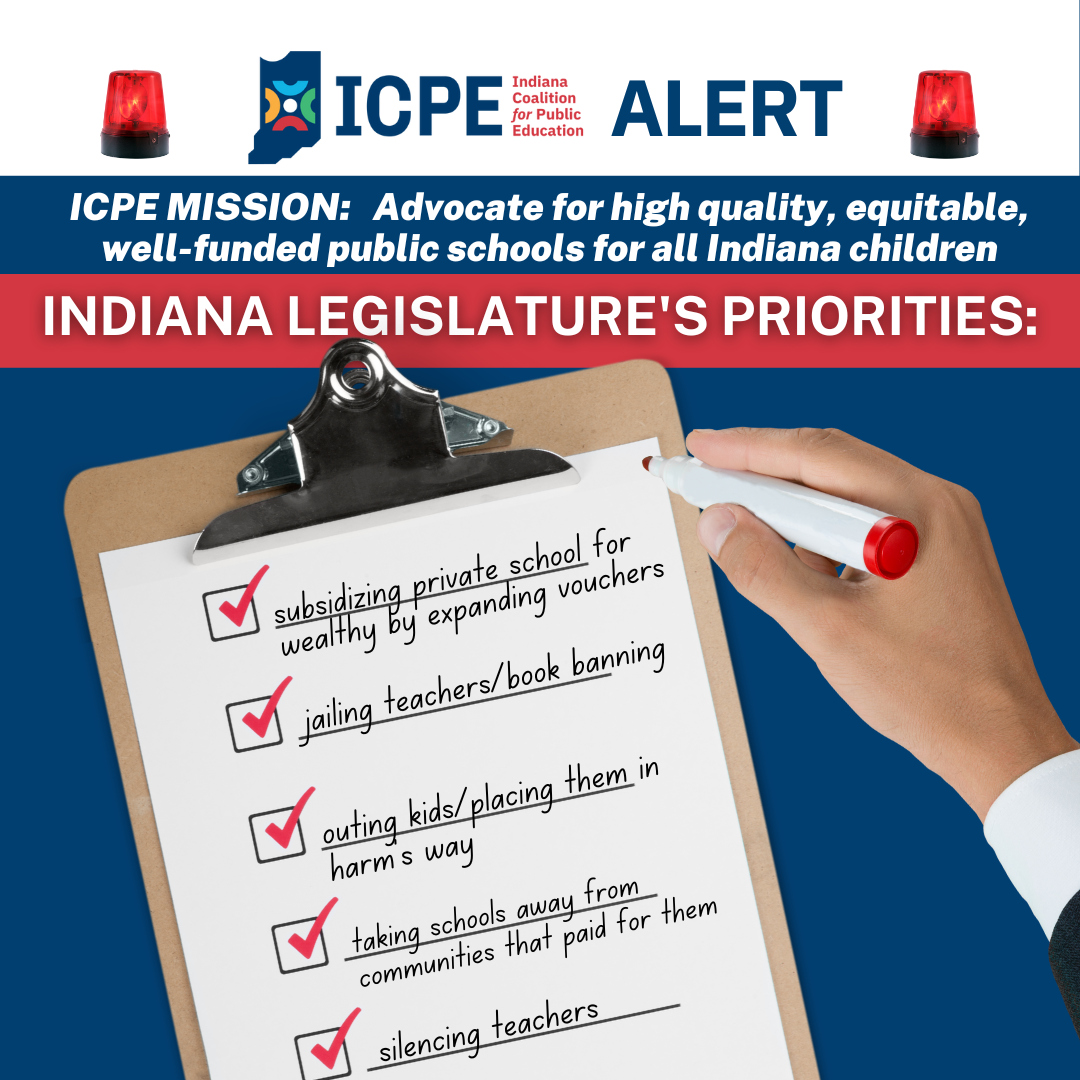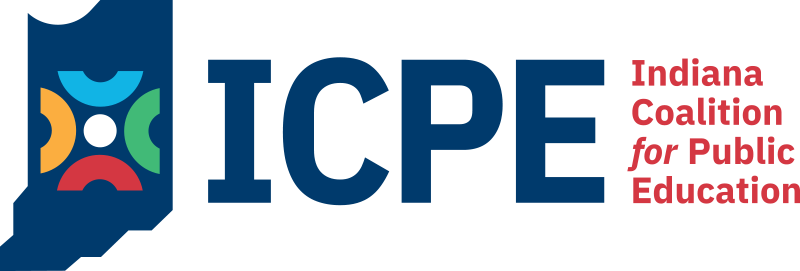Sine die – the session has ended

Sine Die. The session has ended.
We wonder, yet again, what it will take for Indiana’s citizens to see how the attack on public schools, the Common Good, will affect our children for decades to come. The supermajority will crow about historic funding in this budget. Certain education associations will thank them for this “generosity” and for increasing funding at the eleventh hour. But who really benefited?
We entered this session with a teacher shortage, public schools underfunded, high inflation, public health struggling and, particularly, a mental health crisis with our kids. Teachers are dealing with unprecedented behavioral issues among students who need extra help and care, and school officials have begged our legislature to provide the funding to increase access to help. We need counselors, school social workers, and psychologists. But we also need nurses, bus drivers, and, yes, teachers.
You can’t solve a teacher shortage by spending a legislative session (or 10) scapegoating our educators by listening to people who wear purple tinfoil hats and malign teachers with conspiracy theories about grooming children or pushing porn. But you sure can exacerbate it through sneaking language into a different bill (HB1447) that allows teachers (and librarians) to be charged with a felony by people who disagree with reading certain books.
Here’s another way to really destroy the morale of our teachers and increase the shortage: take away their voice at the table over class sizes or safety issues (SB486) by killing their union right to discussion. Parents know that our teachers’ working conditions are our children’s learning conditions and this bill will make both more stressful. Indiana already pays our teachers less than surrounding states. Our teachers will flee. Business: take note.
You can’t raise teacher pay when you divert the funding away. The budget reflects this supermajority’s priorities. Traditional public schools got a 5.4% increase the first year (2024), with just a 1.3% increase the second (2025). That might not seem so bad to some, but many schools will see no new increase in funding. Charter schools, which take public funding but are privately-run and don’t have to follow all of the state laws that public schools do, will see an increase of 6.8% (2024) and 3.4% (2025). In addition, charters will now (SB391) be able to take over public school buildings more easily; when a building falls below 60% capacity for students, they must list it with the Indiana Department of Education, enabling charter schools to buy it for $1. The ultimate priority reflected in the budget is that private voucher schools (that can and do discriminate) will see a 72.6% increase the first year, and 14.5% the second.
The expansion of vouchers starkly contrasts with the state’s commitment to our most vulnerable children. They have raised the income limit to qualify for a private school voucher to $220,000 for a family of four. This is 742% of the federal poverty line. BUT, if you are a working family and want to put your child in On My Way PreK, the state funded preschool, you will get cut off if you make above $45,000 or 150% of the federal poverty line. Why are our state tax dollars going to the wealthy who can already afford to pay for private school tuition?
Follow the money. School choice proponents have deep pockets. This isn’t about caring for our children. If they cared about children, they would ensure that everywhere our public tax dollars go, the rules and regulations that public schools have to adhere to, and the rights that children have in public schools, would follow, too. They don’t. Voucher schools don’t get audited by the State Board of Accounts. Charter schools get access to various funding streams that are unavailable to traditional public schools, such as grants and generous term loans before they even enroll a single student. Often they don’t pay back their loans, which have been forgiven by the state to the tune of 90 million dollars. But when we look at the relationships between organizations and billionaires who push this extremist education agenda which was referred to as an “Education Industrial Complex” during the final budget debate, we see how they land in the coffers of elected officials. The icing on the legislative session cake was a sneaky raise of 40 to 60% for the governor and state elected officials. Is this for the kids?
Indiana is 28th in the country for the overall well-being of its children. We have the 20th highest poverty rate for our children at 17.6% with children of color experiencing poverty at a significantly higher rate. This year’s Kids Count Data report from the Indiana Youth Institute points out that the access to care for children (health, dental, mental health) is severely lacking. Nearly a third of high school students considered suicide in 2021 with 65% of those who seriously considered suicide identifying as gay, lesbian or bisexual. In addition, the rates for mental health are worse for our children of color. If legislators cared about kids, they wouldn’t have spent a legislative session targeting these most vulnerable of our students and working to create a less safe learning environment for them.
What will it take, Hoosiers? Are you ready to organize and ensure a bright future for our kids? It may be “sine die” for the legislature, but our work cannot be adjourned. Onward.
